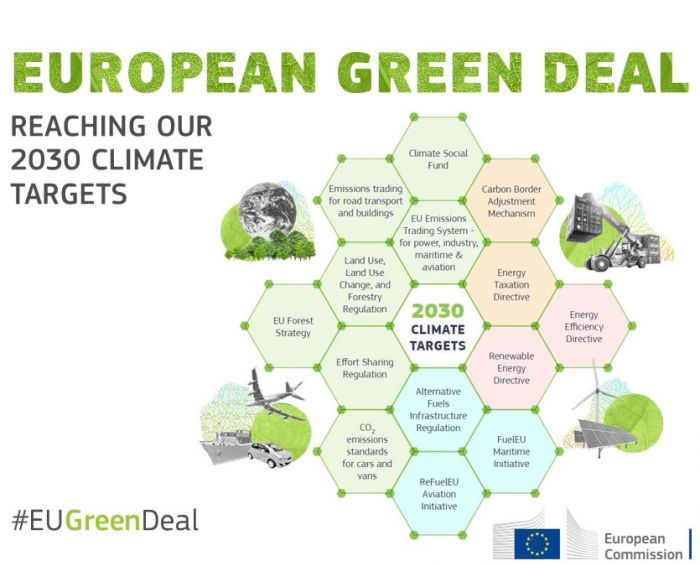
On 14th July 2021, the European Commission proposed the package to combat climate change and stimulate the green transition. When the European Green Deal was announced in December 2019, the EU’s primary goal of achieving climate neutrality by 2050 was also announced. In July 2021, Ursula von der Leyen announced the means by which the EU intends to achieve its 2050 target and, above all, proposed a revised interim target: to reduce net CO2 emissions at European level by at least 55% by 2030 (the current target is 40% and the reduction is compared to the change from 1990 levels).
“We are laying the foundations towards a clean and decarbonised economy, Europeans want healthier living and economic growth but without harming nature. I will put all my weight and strength into making this happen, I am convinced that we can make this leap forward with innovation and investment. Transport and energy must be accessible to all, but the road transport sector is the only one where emissions have increased in recent years. We must reverse this trend.”
In one of its statistics updated to 2021, the Commission states that 75% of greenhouse gas emissions in the European Union come from the energy sector. This is why it will become a focal point for ESG actions and even investments in the coming decades.
Paolo Gentiloni, European Commissioner for Economic Affairs, during the G20 Venice 2021 spoke about a sort of ‘carbon-tax’: “For a ‘green’ taxation it is now or never”, and explained that we need to “find a balance between ambition and the need for global cooperation. Both are necessary and it is up to us to find a balance.
Alongside the revision of the current system of allocation of emission allowances by companies, the new package includes a proposal for a Carbon Border Adjustment Mechanism (CBAM), which aims to “tax” those who import cheaper energy from non-renewable sources.Of course, many believe that the EU could do more to combat climate change (see the WWF’s response to the Fit for 55 plan here) and others fear that the costs of this transition could fall too heavily on end consumers, households (for whom the Commission has set up a Social Climate Fund). Let us not forget, however, that the work done by the Commission in this year and a half is truly enormous and lays the foundations for what will also be the ESG investment landscape in Europe.

So what can we expect from the corporate side in terms of green transition? With these new mechanisms (which will be implemented gradually over time – the CBAM is only a proposal, it has to be voted by the European Parliament to become operational), a shift towards renewable energy sources and ESG business and environmental practices becomes increasingly important. It should be noted that the pandemic has greatly accelerated people’s awareness of climate change issues and positive social, corporate and environmental impact practices. If companies do not adapt quickly on this front, they expose themselves to significant reputational risk, resulting in losses in the stock market value of their shares.
This is why I believe that investing today in instruments with a high ESG rating lowers overall investment risk because you are potentially less exposed to negative price changes as a result of (increasingly stringent) legislative changes to protect the environment and combat climate change.



































